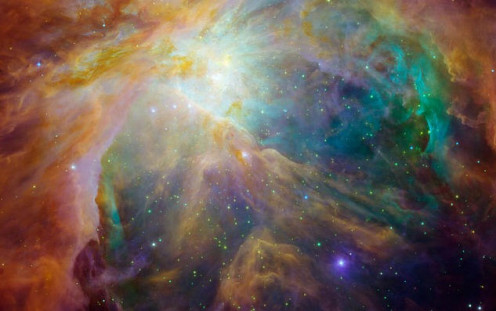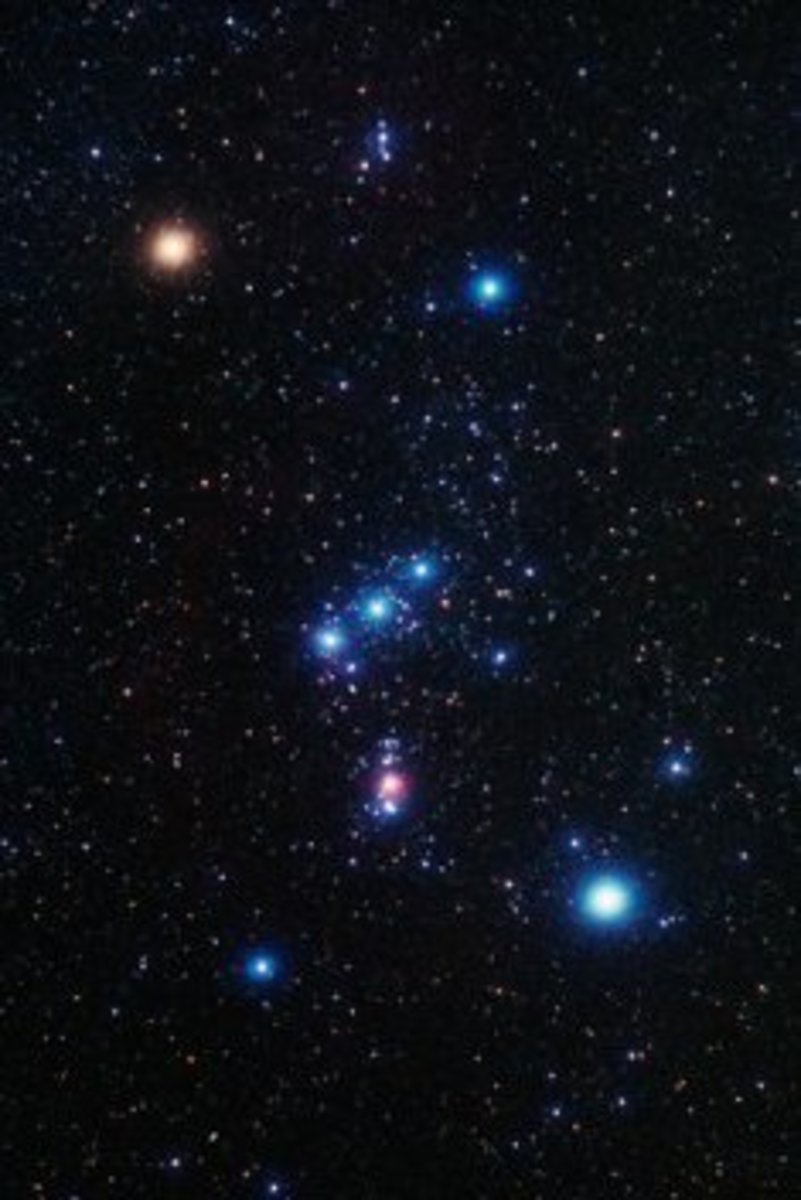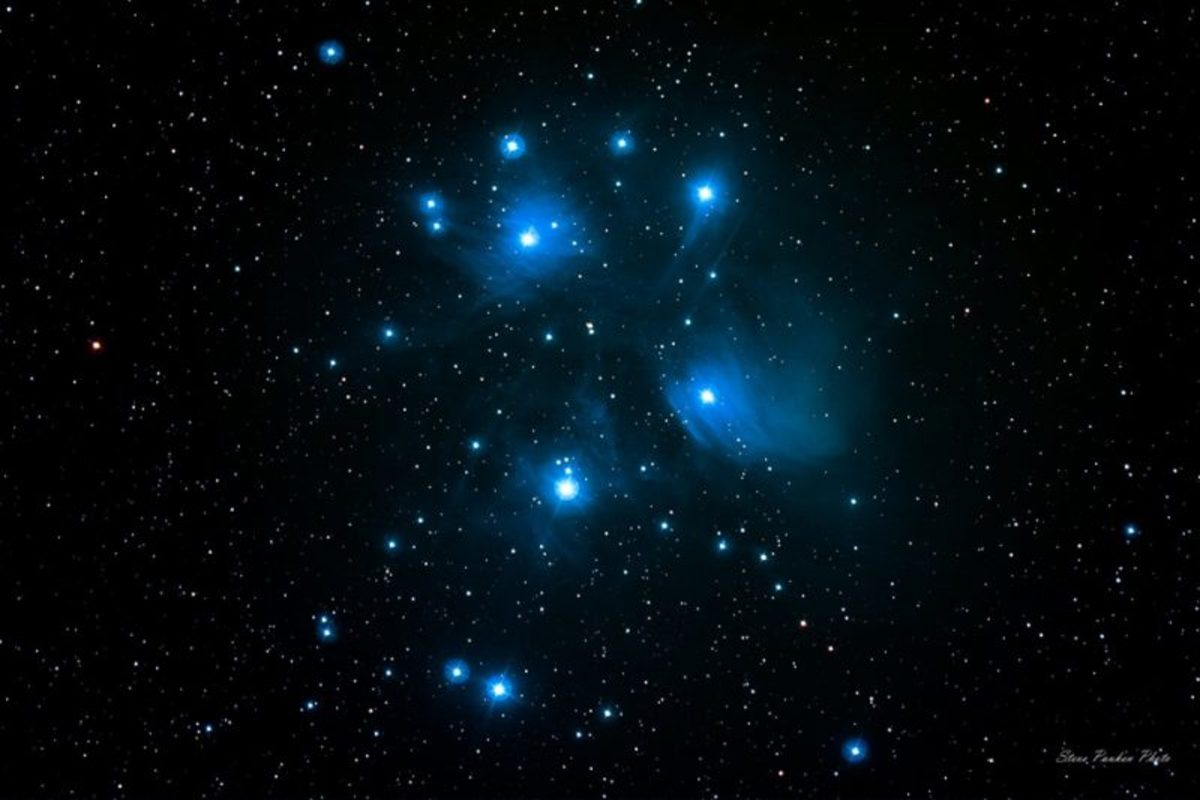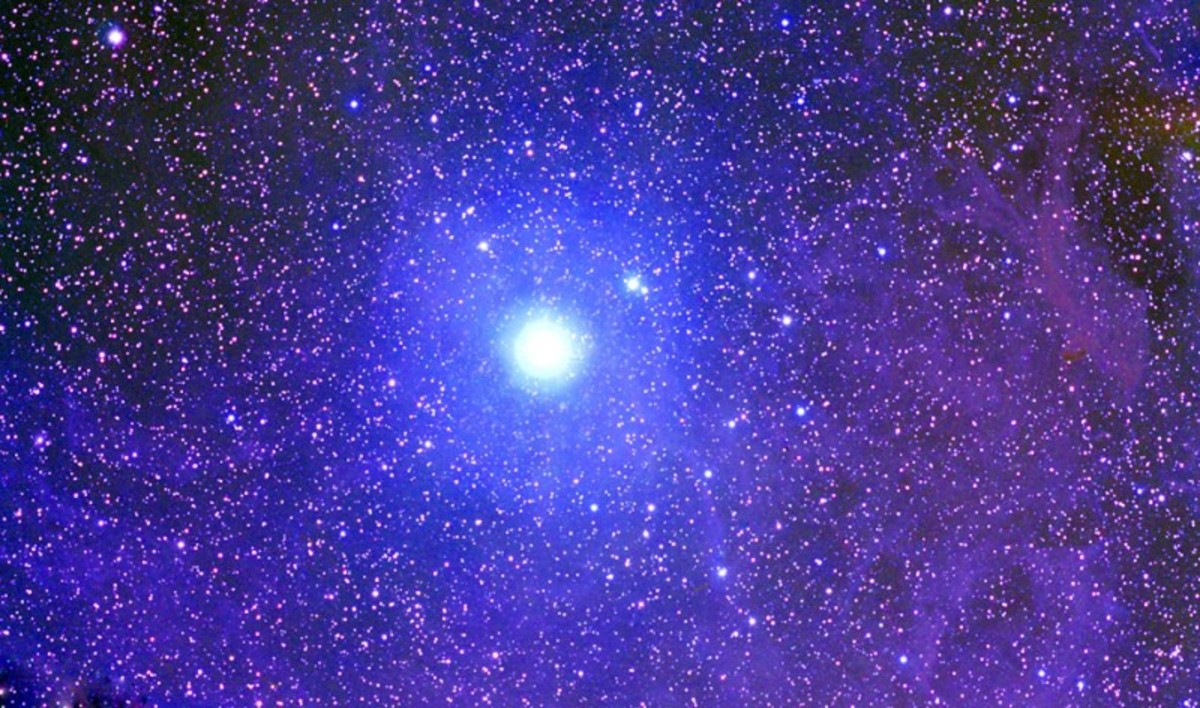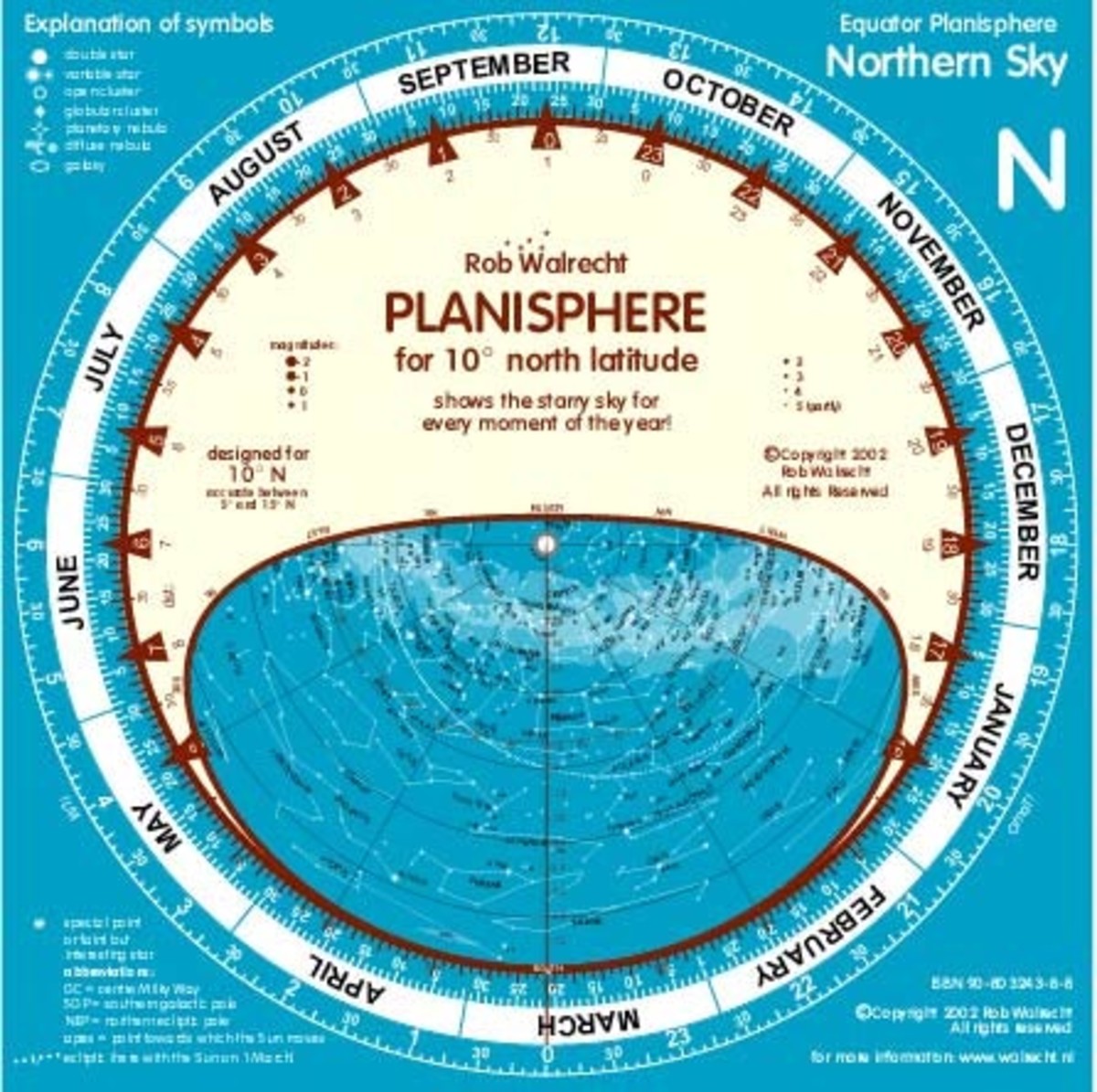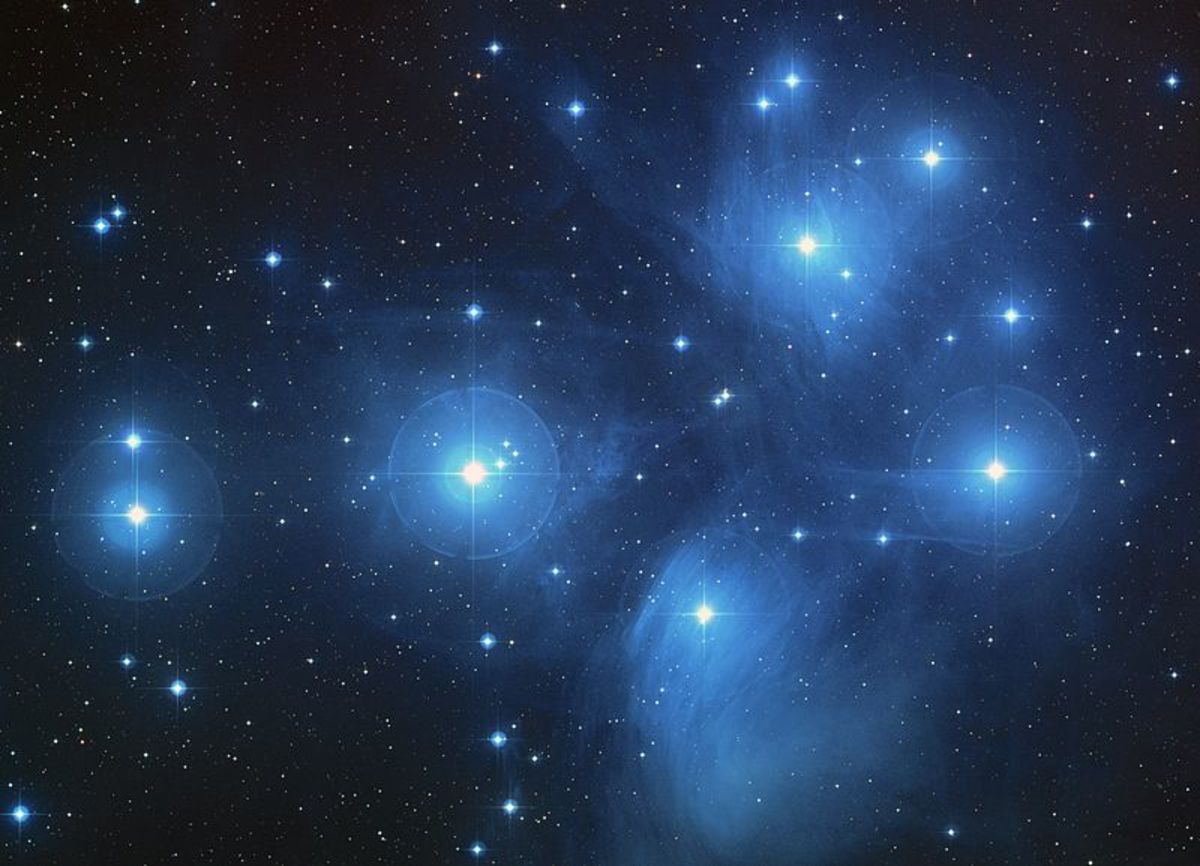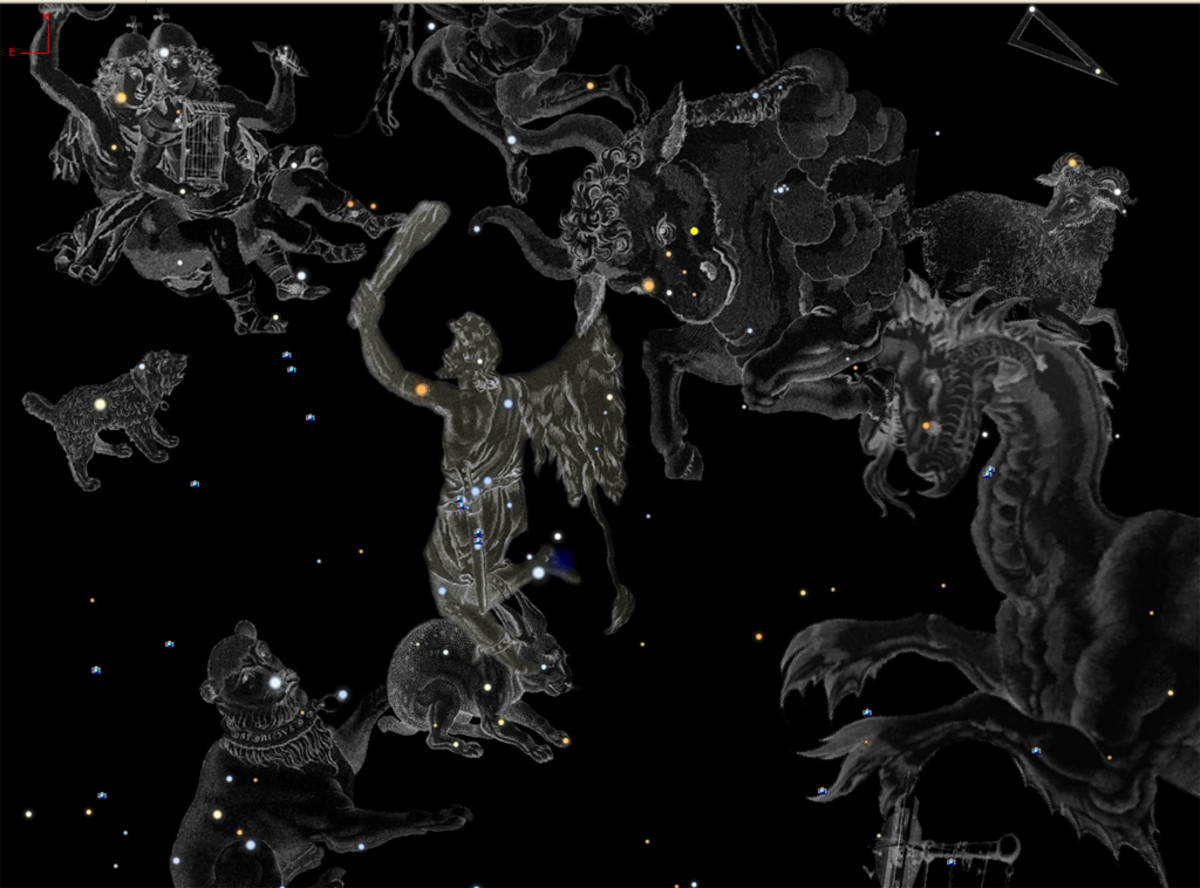The Constellation of Orion
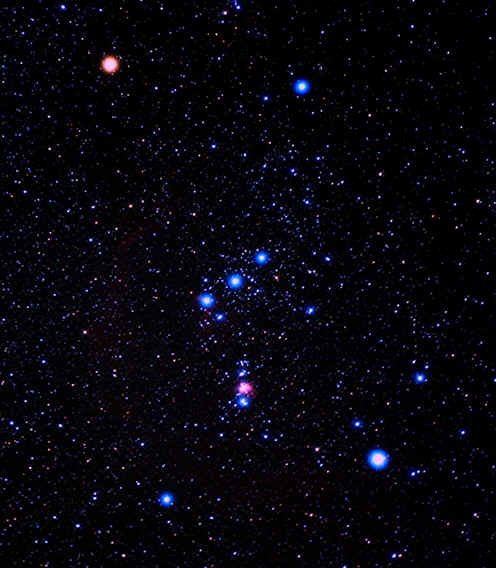
The Orion constellation is probably one of the most recognizable constellations in the night sky. It is visible throughout the world. Its name – Orion – comes from the hunter Orion in Greek mythology.
The constellation of Orion formed about 1.5 million years ago. It will remain recognizable in the night sky for the next 1 to 2 million years. So it will be around for a while then!
Let’s look at the elements that make up this constellation (I will describe them in relation to their position in the photo).
Betelgeuse
Top left in the photo above, Betelgeuse is a massive M-type red supergiant star that is nearing the end of its life. (When it eventually does explode, it will be visible even during the day from earth – but don’t worry it is not due to explode any time soon!) It glows a dull red.
It is close to 600 million miles (1,000 million km) across. It is estimated at around 250 Suns, so if you replaced our sun with Betelgeuse, it would completely engulf the Earth and extend as far as Mars.
It is a semi-regular variable star (which essentially means it pulsates) and as a result it was mistakenly classified as the brightest star in the constellation because at the time of classification it was experiencing an increase in brightness. It is the twelfth brightest star in the night sky.
Betelgeuse is a magnitude 0.45 star and is 427.57 light years away. (You’d need the starship Enterprise to get there in your lifetime!)
Bellatrix
Moving clockwise, the star in the top right position in the photo is Bellatrix. It is the twenty-second brightest star in the night sky. Bellatrix is a B-type blue giant, and its luminosity is derived from its high temperature rather than its radius.
It is a magnitude 1.60 star and is 243.04 light years away.
It was once thought that all women born under the sign of Bellatrix would be fortunate and have the gift of speech. The star's name is often translated as 'Female Warrior' or 'Amazon', and as a result it is also known as the "Amazon Star".
Rigel
Bottom right is Rigel. Rigel is a B-type blue supergiant and is the sixth brightest star in the night sky. It is actually a binary star but its companion is much fainter.
Rigel is of magnitude 0.15 and is 772.88 light years away.
Like Betelgeuse, Rigel will also pass its supergiant stage soon (on an astronomical scale!) and it will either collapse in a supernova, or shed its outer layers and turn into a white dwarf.
Saiph
The final of the outer stars (bottom left in the photo) is Saiph. Saiph is of magnitude 2.05 and is a similar distance to Rigel, being 721.58 light years away (that is if you can call a difference of 51.3 light years similar!!)
It appears much fainter than Rigel because its extremely hot surface temperature of 46,000°F (26,000°C) causes it to emit most of its light as ultraviolet light.
Orion's Belt
The three stars of Orion’s belt are (left to right in the photo):
Alnitak – is a triple star, with the brightest being a hot blue supergiant 817.43 light years away and of magnitude 1.85. (Close by, just to the south, is the renowned Horsehead Nebula, a so-called dark nebula that is not visible in scopes but quite spectacular in long-exposure photographs.)
Alnilam – is a whopping 1342.21 light years away. It is a B-type blue supergiant with a magnitude of 1.65. Alnilam is losing mass quickly, a consequence of its size, approximately four million years old.
Mintaka – the faintest of the belt stars, is actually a, eclipsing binary variable star system. It is composed of a large B-type blue giant and a more massive O-type white star. Both stars orbit around each other every 5.73 days. It is magnitude 2.40 and is 916.17 light years away.
The Horsehead Nebula
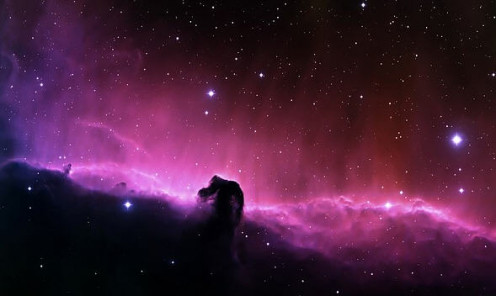
The Orion Nebula
Orion’s sword hangs from his belt and in here you will find the fabulous Orion Nebula (also called the Great Nebula M42). Nebula is the Latin word for cloud, and is the term used for the cosmic gas and dust that lie among the stars. The nebula is a star nursery – this is where new stars are ‘born’.
The Orion Nebula is visible to the naked eye under a dark sky and can be clearly identified as something other than a star. Using binoculars, its swirling clouds of nascent stars, luminous gas, and dust can be observed.
Inside the Orion nebula is the four-star system called the Trapezium. These four stars (and at least two others) are held together by a common gravity.
The Orion Nebula
